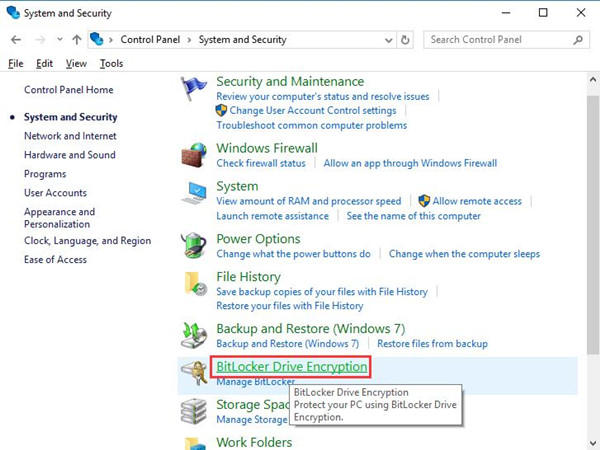

- #Bitlocker on the go hardware encryption password#
- #Bitlocker on the go hardware encryption windows#
Allow data recovery agent–Data recovery agents are individuals whose public key infrastructure (PKI) certificates are used to create a BitLocker key protector.System drives recovery options–Enable to set options for users to recover data from operating system drives protected by BitLocker.Pre-boot recovery options–Enable to set the recovery message or customize the URL provided on the pre-boot key recovery screen when the operating system drive is locked.TPM startup key and PIN–You can require both a startup key and a PIN.

When this USB key is inserted into the device, access to the drive is authenticated and the drive is accessible. A startup key is a USB key with the information to encrypt the drive.
#Bitlocker on the go hardware encryption password#
Allow BitLocker without a compatible TPM–Check the box to require either a password or a USB drive is required for startup.Additional startup authentication–Select whether BitLocker requires additional authentication each time the computer starts and specify if you’re using a Trusted Platform Module (TPM).

Encryption option for system drives–Select the encryption method and the cipher strength of the key for operating system drives.In this example, no hardware encryption is used. However, if it says hardware encryption, you should consider removing the encryption and re-encrypting the drive after setting the policy. If you see something along the lines of AES 128 or AES 265, you are good to go. What we are looking for is the entry called Encryption Method. This can be done by running this command: manage-bde -status Therefore, make sure to check which devices have hardware encryption deployed. If a drive is already encrypted with hardware encryption, setting this GPO will not re-encrypt the drive. Set these to Disabled and BitLocker will no longer use hardware-based encryption. In all three subfolders (Fixed Data Drives, Operating System Drives, Removable Data Drives), there is a setting called “Configure use of hardware-based encryption for … drives”.
#Bitlocker on the go hardware encryption windows#
It can be found in Computer Configuration > Administrative Templates > Windows Components > BitLocker Drive Encryption. We can recommend the software-based encryption with good conscience.įor BitLocker, this setting can easily be controlled by a GPO. Our security team conducted some tests in which we focused on usability and performance. In reaction, Microsoft issued an Advisory ADV180028 in which they recommend to disable hardware-based encryption for now and only use software-based encryption. They found that every tested drive can be fully decrypted without knowing the key. The original paper can be downloaded here. In their research, they looked at hardware-based encryption of modern SSD drives. In the beginning of November, two researchers from Nijmegen, Netherlands published a concerning research paper.


 0 kommentar(er)
0 kommentar(er)
